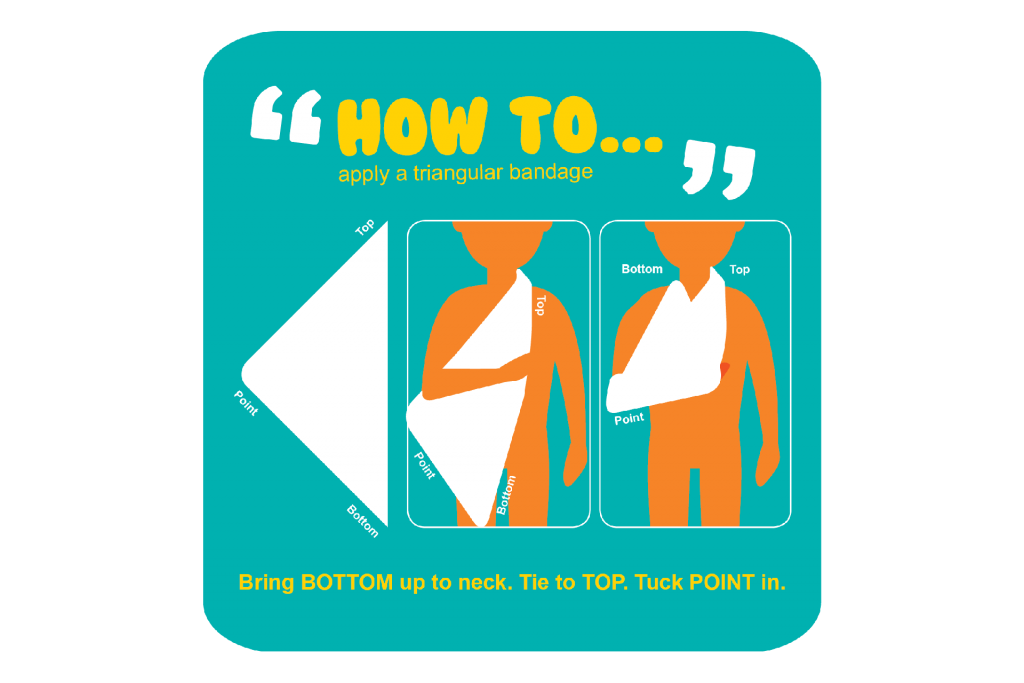A Simple Guide To Bandages
With so many different types of bandages available its easy to get confused with what bandage to use when. Bandages are generally used to cover wounds, to apply pressure to bleeding wounds and to support and immobilise sprains, strains and broken bones.
I have put together a list of the most common types of bandages and when to use them. As you will see most of them have interchangeable uses so its really a matter of preference and of course, cost.
There are three major types of bandages – roller bandages, triangular bandages and tubular bandages.
ROLLER BANDAGE
These are long single strips of breathable material. Depending on the thickness and elasticity, these bandages are the most versatile.
The different roller bandages are described below:
1. Conforming bandage
This bandage has a high degree of stretch so that it can conform to any shape. This bandage comes in a light, medium and heavy weight
Use:
- Can be used to hold a dressing in place
- Can be used with a dressing to apply pressure to control bleeding wounds
- A thicker weight can be used to compress and support a sprain or strain
2. Crepe bandage
This is a thicker weight than conforming bandage.
Use:
- Can be used to hold a dressing in place
- Can be used with a dressing to apply pressure to control bleeding wounds
- Can be used to compress and support a sprain or strain
- Can be used to compress a limb in the event of a poisonous snake bite
Both conforming and crepe bandages are never applied directly onto open wounds. A dressing must be in place first.
3. First aid dressing
This is a roller bandage that has a dressing pad sewn into it. The bandage is usually lightweight with some elasticity.
Use:
- The pad is applied directly onto an open wound and then the bandage is rolled to keep it in place. There is no need to apply a separate dressing first.
4. Elastic adhesive bandage
This roller bandage has a very sticky adhesive, which can be taped directly onto the skin. This bandage is thick weight. However, this is not my favourite bandage as it can be very painful to remove if there is a lot of hair on the skin and some people may have an allergy to the adhesive.
Use:
- Can be applied onto a joint to compress and support a sprain or strain
- Can be applied over a conforming or crepe bandage for additional pressure to control bleeding wounds. Great for amputations and arterial bleeding.
- Can be applied onto a conforming or crepe bandage to secure it in place
- Can also be used to hold ice packs in place on the injured area
5. Cohesive bandage
This is a thin lightweight breathable bandage that sticks to itself, without actually being sticky. There is no risk of pulling out any hairs when removing this bandage.
Use:
- Most commonly used to compress and support sprains and strains
TRIANGULAR BANDAGE
This is the most versatile bandage. It is usually a single sheet of thick cotton or calico in the shape of a large triangle. It can be applied to areas of the body where it may be more difficult to apply a roller bandage such as the scalp.
Use:
- These bandages are most commonly used to construct slings for soft tissue injuries, broken bones or dislocations. Some triangular bandages come with safety pins to help you construct the sling but most of the time you will not need them;
- Can be used to secure splints;
- Can be used as a pad on top of a dressing to apply extra pressure for a bleeding wound;
- Can be folded down to form a strip of bandage and wrapped around a wound to hold a dressing in place and/or apply extra pressure to control bleeding;
- Can be used to elevate a limb to reduce blood flow to the area if bleeding a lot from an open wound;
- Can be used to elevate a limb to reduce blood flow and limit swelling; and/or
- Can be used as a tourniquet in an emergency when the use of a tourniquet may be warranted.

TUBULAR BANDAGE
These bandages are not normally found in first aid kits. They can be medium to heavy weight.
Use:
- The thicker weight bandages are used for compression, support and to reduce swelling for joint sprains and strains;
- Can be used to protect the skin under a cast for a broken bone;
- Can technically be used to keep a dressing in place and apply pressure to bleeding wounds but care needs to be taken when applying it so that the dressing does not shift when the tube is pulled over the injured area.
WHAT IS A DRESSING?
A dressing is something that is applied directly onto a wound to cover it. A bandage can then be applied over a dressing to keep it in place if the dressing is not adhesive.
WHAT IS A PLASTER?
Depending which way you look at it, a plaster can either be an adhesive dressing or an adhesive bandage with an attached dressing. Plasters are more commonly known as adhesive dressings and Band-Aid is a brand of plasters.
Bandages are only helpful if used properly. It’s important to recognise the bandages you have in your first aid kit and to know which bandage you should use when and how to properly apply them.

